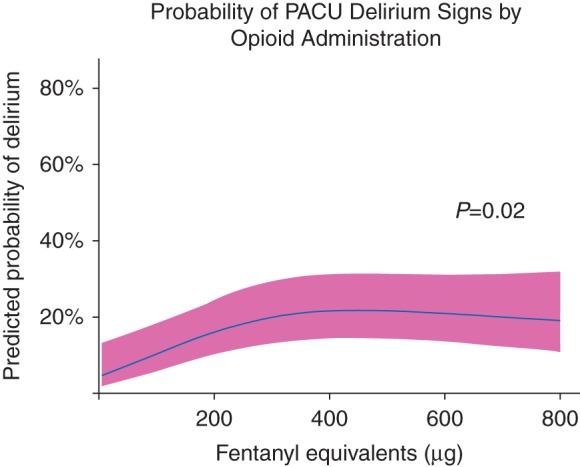Fig 1.

Probability of PACU Delirium Signs by Opioid Administration. Total preoperative, intraoperative, and post-anaesthesia care unit (PACU) opioid administration was independently associated with delirium signs during PACU stay, defined as a positive Confusion Assessment Method for the ICU1 at 30 min, at 1 h, or at discharge from the PACU. The solid line demonstrates the predicted probability of developing PACU delirium signs according to fentanyl equivalents received, with the pink ribbon indicating the 95% confidence interval. This association was most meaningful when examined between the 5th (50 μg fentanyl) and 50th (383 μg fentanyl) percentiles of opioid administration (common dose ranges for opioids in patients undergoing general anaesthesia) in our cohort, such that a patient receiving opioids equivalent to 383 μg fentanyl would have over 6 times the adjusted odds of developing delirium signs during PACU stay than a patient receiving 50 μg fentanyl (odds ratio [OR] 6.2, 95% CI 1.7, 22.1). Alternatively, when comparing the 50th to the 95th percentiles of opioid administration within our cohort, a patient receiving 383 μg fentanyl would have similar adjusted odds of developing delirium signs during PACU stay than a patient receiving 850 μg fentanyl (OR 0.88, 95% CI 0.45, 1.71). The lack of association at the higher doses could reflect a ceiling effect of the role of opioids in contributing to delirium signs or be a manifestation of fewer patients receiving such large doses.
